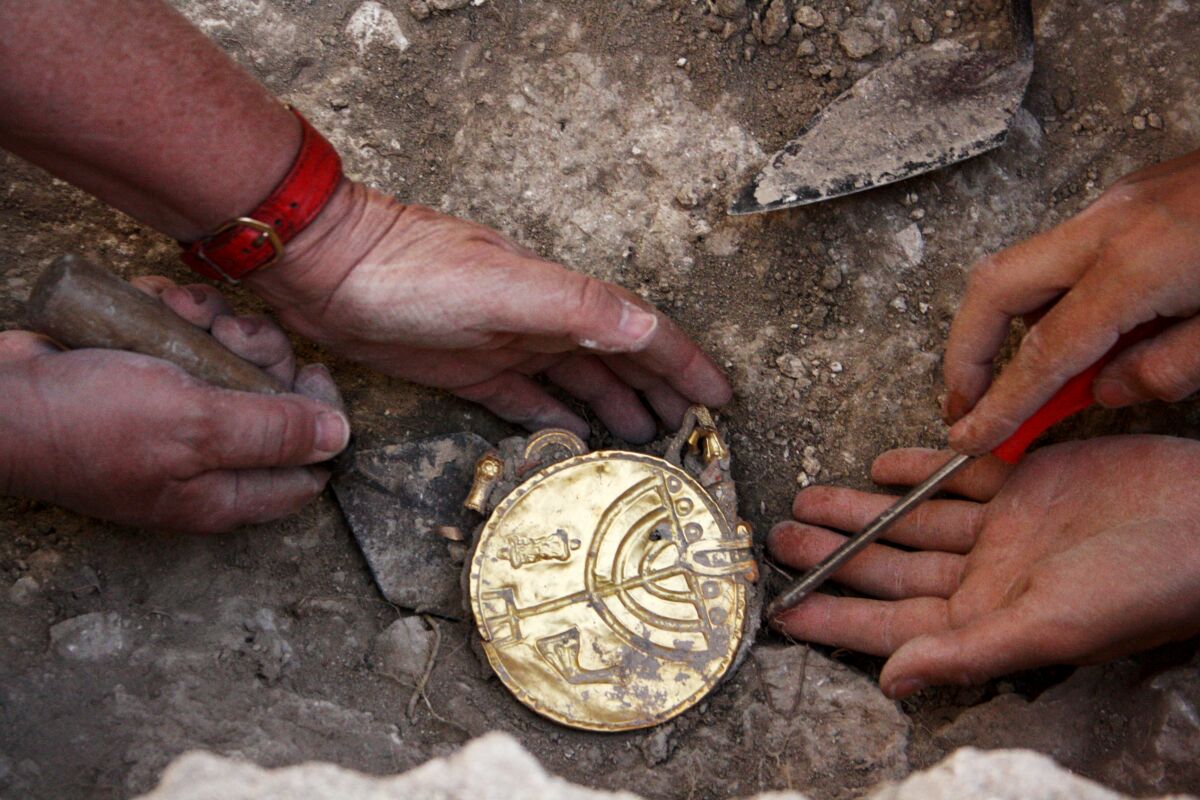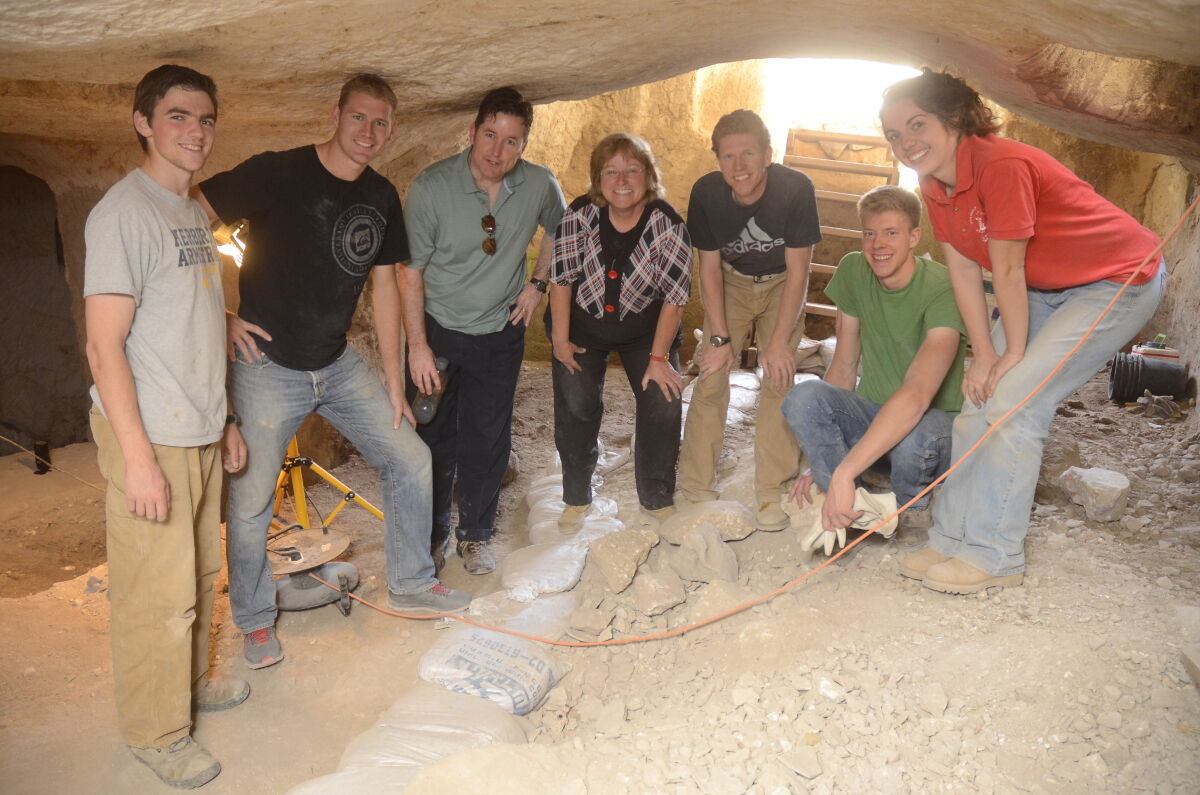Ophel Excavation 2013
During the summer of 2013, Dr. Eilat Mazar began Phase 2b of the Ophel excavation. This summer dig took place from May to August. Herbert W. Armstrong College sent 15 volunteers to assist Dr. Mazar, making up one third of Mazar’s staff.
During the three-month excavation, all three areas reached First Temple period remains and uncovered the ruins of King Solomon’s complex near the foot of the Temple Mount in Jerusalem.

Major discovery: While Mazar’s goal of uncovering Solomonic-period remains was accomplished, she would have never expected what happened just five days into the excavation. After excavators had barely broken through the surface of a new area, just a few centimeters beneath modern debris, they began to expose a hoard of rare gold coins, silver and gold jewelry. And among these treasures was a real archaeological gem: a large gold medallion ornamented with a menorah, the iconic Jewish symbol of a seven-branched candlestick. Dr. Mazar heralded this find as “a once-in-a-lifetime” discovery.
Dr. Mazar and her team believe the menorah medallion, which was attached to a gold chain, was probably used to adorn a Torah scroll—a practice that Jews have been known to do for millennia. If so, the medallion and accompanying items would be the earliest known Torah scroll ornaments ever discovered.

This collection was discovered about 50 yards south of the Temple Mount, inside a Byzantine structure that dates back to the sixth century c.e. It had most likely been carefully packed and hidden by a prominent group of Jews during the Persian conquest of Jerusalem at the beginning of the seventh century c.e.
In her book The Discovery of the Menorah Treasure at the Foot of the Temple Mount, Dr. Mazar theorized that the collection of Torah scroll adornments and the purse containing coins and other means of payment accompanied a group of prominent Jews sent as representatives from their community to build a synagogue in Jerusalem. Mazar wrote:
It is not inconceivable that it was earmarked as a contribution toward the rebuilding of the temple itself. This we cannot know. What is certain is that their mission, whatever it was, was unsuccessful. The treasure was abandoned, and its owners could never return to collect it.
AIBA involvement: Armstrong College students and aiba staff helped Dr. Mazar prepare a 17-minute film (recorded in both Hebrew and English) detailing the significance of the Ophel treasure. They also assisted in creating her press release and promotional videos in preparation for the public announcement of the discovery, as well as the English translation of The Discovery of the Menorah Treasure at the Foot of the Temple Mount.
https://www.youtube.com/watch?v=PRP-qAzLIRo
Cave probe: Toward the end of the 2013 excavation, volunteers entered a cave on the site to better understand its use. Dr. Mazar decided to do a test probe, which means rather than excavating the whole cave, a portion was excavated to the bottom. This 4-meter deep probe in the center of the cave spanned layers relating to the Byzantine period (4th–7th centuries c.e.) down to the Herodian period (first century c.e.).

The 2013 probe revealed that the cave, used as a water cistern at one time, was filled and occupied by Jews hiding from the Roman government. More evidence to this fact was revealed in Dr. Mazar’s 2018 Ophel excavation.
Learn more: A detailed synopsis of the major discoveries from all three phases of the Ophel excavations can be found in our article, “Discoveries of Eilat Mazar: The Ophel.” To learn more about the menorah medallion and gold hoard, read Christopher Eames’s article “Menorah Medallion and Treasure Trove.”